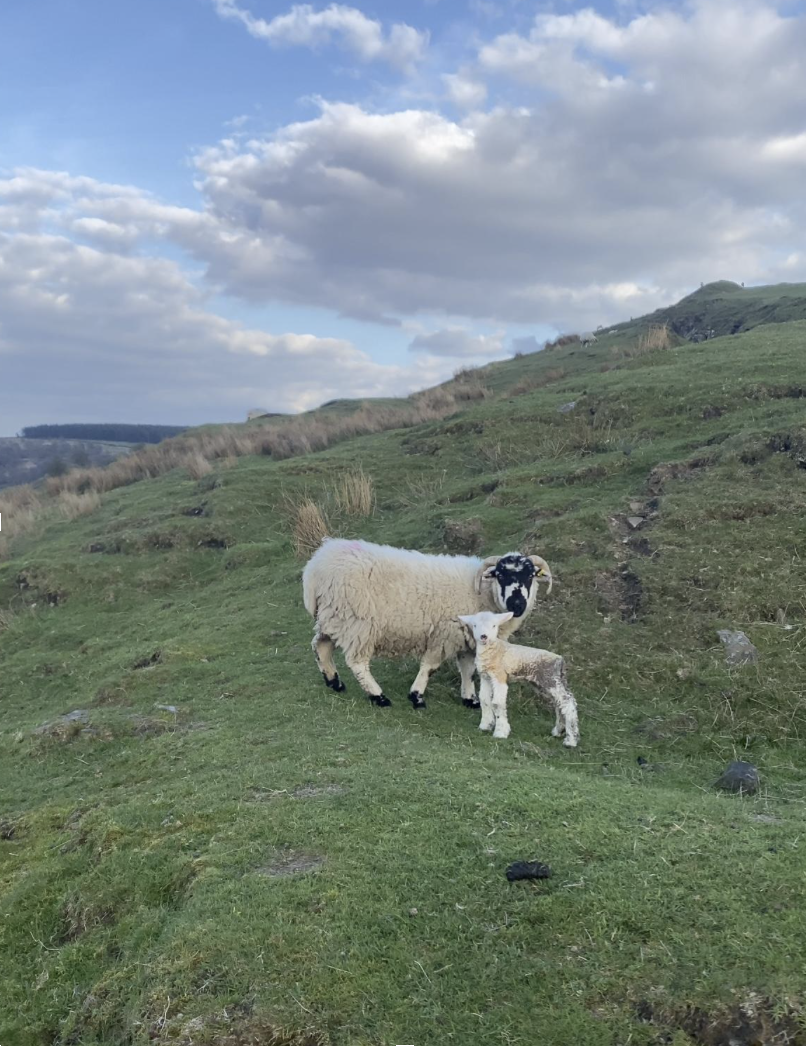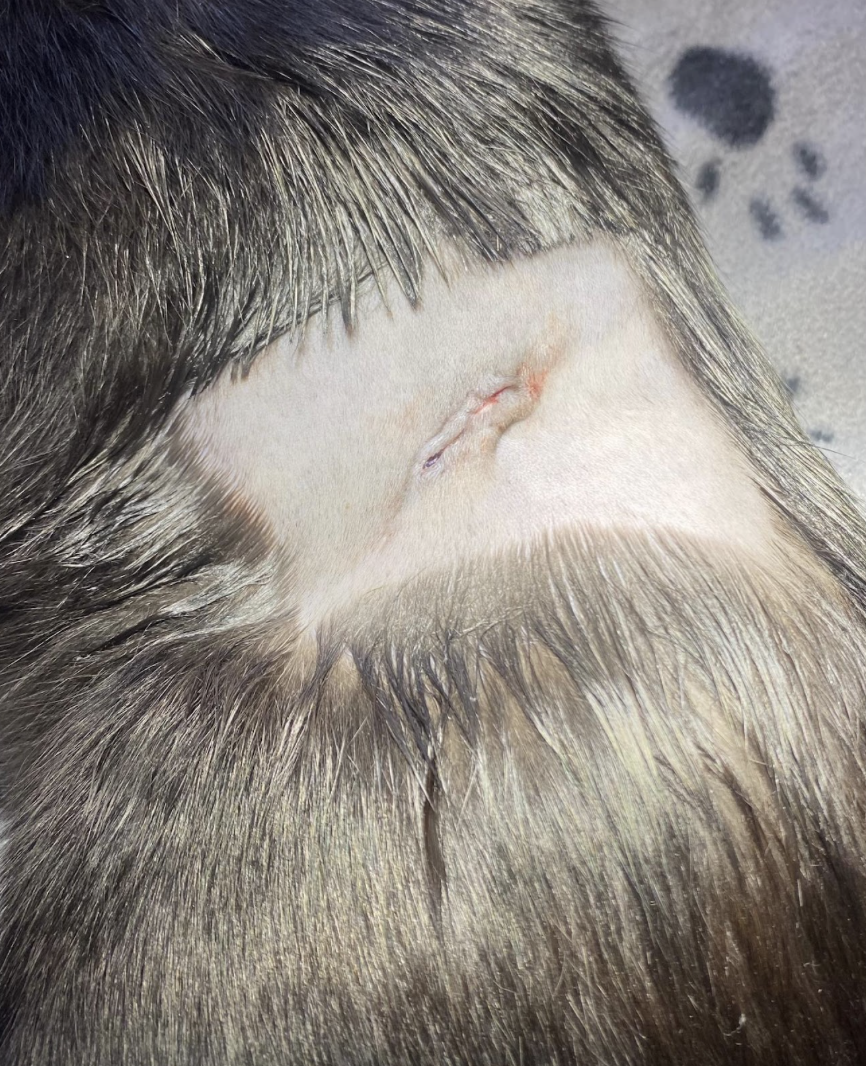PHOTOGRAPHY
 Wednesday, July 26, 2023 at 12:00PM
Wednesday, July 26, 2023 at 12:00PM Submitted by Anila Tynan, Washington State University
 Photography,
Photography,  wwildlife photography in
wwildlife photography in  Photography
Photography  Wednesday, July 26, 2023 at 12:00PM
Wednesday, July 26, 2023 at 12:00PM Submitted by Anila Tynan, Washington State University
 Share this Post | Comments Off
Share this Post | Comments Off  Photography,
Photography,  wwildlife photography in
wwildlife photography in  Photography
Photography  Friday, July 21, 2023 at 12:00PM
Friday, July 21, 2023 at 12:00PM Submitted by Joanna Itrich, North Carolina State University
"In April 2023, I traveled to Glossop, England to participate in an externship at the Ashdale Veterinary Centre. I truly loved every minute of my experience. From the welcoming people and many sweet patients, to the wonderful views, I regret that I was only able to stay a week, but I am looking forward to going back! I met the owner of the clinic at the VMX conference in Florida and after talking, she invited me to come see her clinic. Our brief encounter at VMX was followed by a year of planning and emailing back and forth, but I am so happy I was finally able to go!
 Glossop is a little, old town about 25 kilometers from Manchester. The town itself is lovely and full of old English architecture and history. There is evidence that the Romans arrived there in 78 AD. The town is on the very edge of the Peak District National Park – an English gem. Every day after the clinic closed, I was able to go hiking around the wonderful area and explore the English culture. English law allows for crossing private lands by foot if you will not disturb the environment – these types of trails are called “public footpaths.” I had the opportunity to try their traditional dishes like black pudding and drink their famous beers. Each day was an adventure! I spoked with the locals and they directed me to the hidden gems in the area. This part of England is well known for raising sheep and April is a lambing season, so I was able to see many adorable babies. Additionally, Manchester was easily accessible by a 30 minute train ride. I was able to visit Manchester one night, which also has many fun things to do and see. I was in awe of the diverse architecture, which highlighted all eras of English history. I am originally from Poland and Glossop was able to make me feel a lot closer to home than any other place that I have visited recently.
Glossop is a little, old town about 25 kilometers from Manchester. The town itself is lovely and full of old English architecture and history. There is evidence that the Romans arrived there in 78 AD. The town is on the very edge of the Peak District National Park – an English gem. Every day after the clinic closed, I was able to go hiking around the wonderful area and explore the English culture. English law allows for crossing private lands by foot if you will not disturb the environment – these types of trails are called “public footpaths.” I had the opportunity to try their traditional dishes like black pudding and drink their famous beers. Each day was an adventure! I spoked with the locals and they directed me to the hidden gems in the area. This part of England is well known for raising sheep and April is a lambing season, so I was able to see many adorable babies. Additionally, Manchester was easily accessible by a 30 minute train ride. I was able to visit Manchester one night, which also has many fun things to do and see. I was in awe of the diverse architecture, which highlighted all eras of English history. I am originally from Poland and Glossop was able to make me feel a lot closer to home than any other place that I have visited recently.
Ashdale Veterinary Centre is a cozy general practice located right in the middle of town. Everything was walkable and my hotel was located about 2 minutes walk from the clinic. All the clinicians were super welcoming and happy to teach. They asked me what I wanted to improve in and we worked on my goals together.
 This clinic also sees exotic species, which was very interesting and taught me so much! I was able to become familiar with drugs that are not approved in the US, which is helpful because I am considering going back to Europe after graduation. Furthermore, I learned a lot of different procedures and techniques that are rarely used back in the United State, like hand tying feline neuter or flank feline spay and was able to discuss the advantages and disadvantages of both. It was very interesting to see and learn about different techniques approaching the same problem. It also seemed like this part of England did not have a lot of mixed breed dogs, therefore, knowing breed predispositions were very handy! Every day I gained critical thinking skills and hands-on experience.
This clinic also sees exotic species, which was very interesting and taught me so much! I was able to become familiar with drugs that are not approved in the US, which is helpful because I am considering going back to Europe after graduation. Furthermore, I learned a lot of different procedures and techniques that are rarely used back in the United State, like hand tying feline neuter or flank feline spay and was able to discuss the advantages and disadvantages of both. It was very interesting to see and learn about different techniques approaching the same problem. It also seemed like this part of England did not have a lot of mixed breed dogs, therefore, knowing breed predispositions were very handy! Every day I gained critical thinking skills and hands-on experience.
Overall, this was an unforgettable experience. I was able to connect two of my passions, veterinary medicine and travelling. This experience also showed me that traveling alone to different countries is possible and can be safe if you take the time to plan and prepare beforehand. Furthermore, this experience helped me to see that my dreams are possible, I just need to work hard for it."
 Share this Post | Comments Off
Share this Post | Comments Off  Externship,
Externship,  Travel,
Travel,  experiences in
experiences in  Experiences
Experiences  Wednesday, July 19, 2023 at 12:00PM
Wednesday, July 19, 2023 at 12:00PM Submitted by Janelle Thomas, Washington State University

 Share this Post | Comments Off
Share this Post | Comments Off  Monday, July 17, 2023 at 12:00PM
Monday, July 17, 2023 at 12:00PM Submitted by Annie Davis, University of Illinois
Moral Braveness
"Moral Braveness is not what it might seem
It’s not easy nor is it simple
It’s not something in between
It’s not a natural born quality
That is a common theme
It’s comes from the braveness of your heart
Something that you dream
It’s something that you stand up for
And maybe make a scene
But you speak about it anyway
Even if it isn’t mainstream
“Well most folks seem to think they’re right and you’re wrong. . .”
but that’s the moral cowardice coming through them like a beam."
 Share this Post | Comments Off
Share this Post | Comments Off  Poetry,
Poetry,  creacreative,
creacreative,  creative writing,
creative writing,  poem in
poem in  Creative Corner
Creative Corner